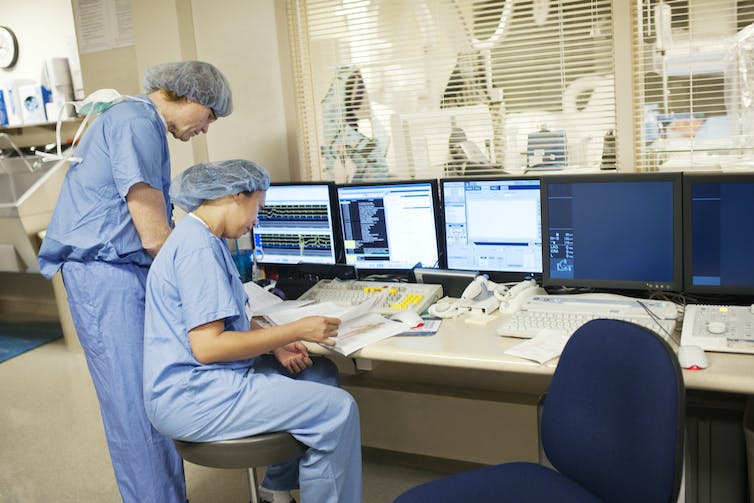Scientific knowledge, as measured by numbers of papers published, has been estimated to double every 17.3 years. However, it takes an average of about 17 years for health and medical research – going from basic lab studies on cell cultures and animals to clinical trials in people – to result in actual changes patients see in the clinic.
The typical process of medical research is generally not well equipped to respond effectively to quickly evolving pandemics. This has been especially evident for the COVID-19 pandemic, in part because the virus the causes COVID-19 mutates frequently. Scientists and public health officials are often left continually scrambling to develop and test new treatments to match emerging variants.
Fortunately, scientists may be able to bypass the typical research timeline and study treatments and interventions as they are used in the clinic nearly in real time by leveraging a common source of existing data – electronic medical records, or EMRs.
We are a team composed of an epidemiologist, pharmacist and cardiologist at the University of Pittsburgh Medical Center. During the COVID-19 pandemic, we realized the need to quickly study and disseminate accurate information on the most effective treatment approaches, especially for patients at high risk of hospitalization and death. In our recently published research, we used EMR data to show that early treatment with one or more of five different monoclonal antibodies substantially reduced the risk of hospitalization or death compared with delayed or no treatment.

EMRs contain a wealth of clinical data that could be used for research.
Reza Estakhrian/The Image Bank via Getty Images
Using EMR data for research
In the U.S., health care systems typically use EMR systems for documenting patient care and for administrative purposes like billing. While data collection is not uniform, these systems typically contain detailed records that can include sociodemographic information, medical history, test results, surgical and other procedures, prescriptions and billing charges.
Unlike single-payer health care systems that integrate data into a single EMR system, such as in the U.K. and in Scandinavian countries, many large health care systems in the U.S. collect patient data using multiple EMR systems.
Having multiple EMR systems adds a layer of complexity to using such data to conduct scientific research. To address this, the University of Pittsburgh Medical Center developed and maintains a clinical data warehouse that compiles and harmonizes data across the seven different EMR systems its 40 hospitals and outpatient clinics use.
Emulating clinical trials
Using EMR data for research is not new. More recently, researchers have been looking into ways to use these large health data systems to emulate randomized controlled trials, which are considered the gold standard study design yet are often costly and take years to…



